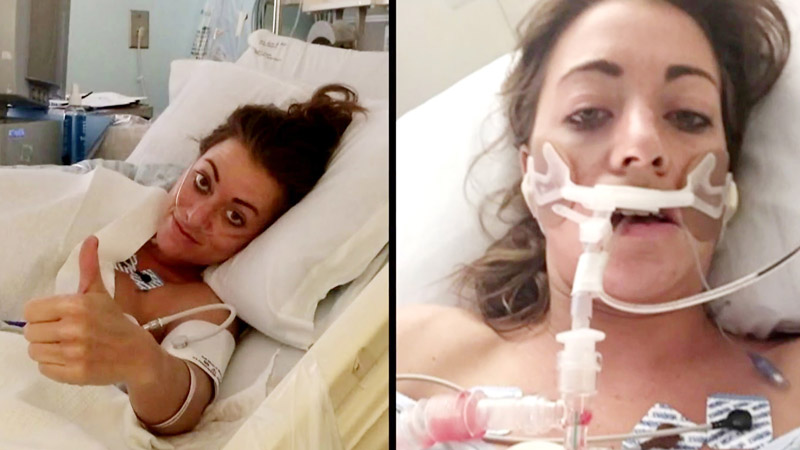Brittany Williams’ life nearly ended in 2014 in a restaurant in New York City’s Times Square. Williams fell into cardiac arrest and lost consciousness at the age of 24. Two strangers jumped into action and conducted CPR on Williams for eight minutes, and she woke in the hospital two days later after being placed in a medical coma.
Williams told her experience on the TODAY show on Feb. 6 to raise awareness about heart health and the significance of CPR training, as well as to remind everyone that even young people may find themselves in life-threatening situations like hers.
The warning signs
According to the American Heart Association, cardiac arrest happens when the heart muscle malfunctions due to an “electrical problem” and suddenly ceases beating. According to the Centers for Disease Control and Prevention, around 90% of people who have a cardiac arrest outside of the hospital die, however, cardiac arrest can be reversed if a bystander begins CPR and uses a defibrillator to shock the heart back to a normal rhythm within minutes.
Cardiac arrest and heart attack are frequently confused, although they are not the same thing. A heart attack happens when the heart becomes clogged. Both heart attacks and cardiac arrest can happen without warning or symptoms. In Williams’ case, though, she ignored a major warning sign the week before she went to New York City.
“I was at work, and all of a sudden the left side of my body went numb and tingly,” she said. “I sat back and thought, ‘Oh no, this doesn’t feel right. This is not what I feel like on a day-to-day basis.'” Williams investigated the internet for what her symptoms may mean as they progressed and found concerning results. “Three things came up: stroke, heart attack, cardiac arrest,” she explained. She took her concerns to her boss, who brushed them off.
“You’re 24 years old. You run five miles a day. You eat extremely healthy, that would never happen to you,” Williams recalled her boss saying. “I trusted her. And three days later, I was on the ground in a restaurant in Times Square with no pulse.” Williams has few memories of the cardiac arrest; the only change she felt in her body before the event was a tingling feeling. Her parents, however, witnessed her cardiac arrest.
“My mom and dad looked over, and they thought I was having a seizure,” she said. “My eyes rolled to the back of my head, and I just collapsed, and I was unresponsive. Dr. Stacey Rosen, a cardiologist at Northwell Health’s Katz Institute for Women’s Health and a volunteer for the American Heart Association, told TODAY that heart problems may affect anyone.
“Listen to your body,” said Rosen, who did not treat Williams. “Heart disease affects young people, old people, thin, healthy runners. And when you feel something isn’t right, act on it.” She stressed the importance of contacting a healthcare professional if you feel something is wrong, even if other people think you shouldn’t worry.
Treatment for cardiac arrest
We tend to think of the heart exclusively as a muscle, but “it’s actually got an exquisite electrical mechanism. And that electrical impulse makes the heart pump,” Rosen explained. Any trained bystander can offer compression and rescue breaths that may restart the heart using CPR (cardiopulmonary resuscitation).
Two ophthalmologists who happened to be at the restaurant when Williams passed out were able to do CPR on her for eight minutes, keeping her alive until emergency medical help was reached. According to the Mayo Clinic, Williams was diagnosed with long QT syndrome in the hospital, a condition that produces a fast, irregular heartbeat.
Long QT syndrome causes “an electric disturbance that makes the heart rhythm chaotic, and then the heart can’t pump normally,” Rosen explained. “After a few seconds, you lose consciousness,” Williams claimed she had surgery to implant a defibrillator to avoid further episodes. According to the Mayo Clinic, implantable defibrillators prevent dangerously fast or irregular heartbeats.
For a while after the ordeal, Williams was “in a state of constant fear” of having another cardiac arrest, she recalled. “But I knew deep down that I had gotten a second chance at life, and I wasn’t going to waste it.” Now she takes time to encourage people to learn CPR and to teach them about heart health “so there can be more stories with endings like mine.”


